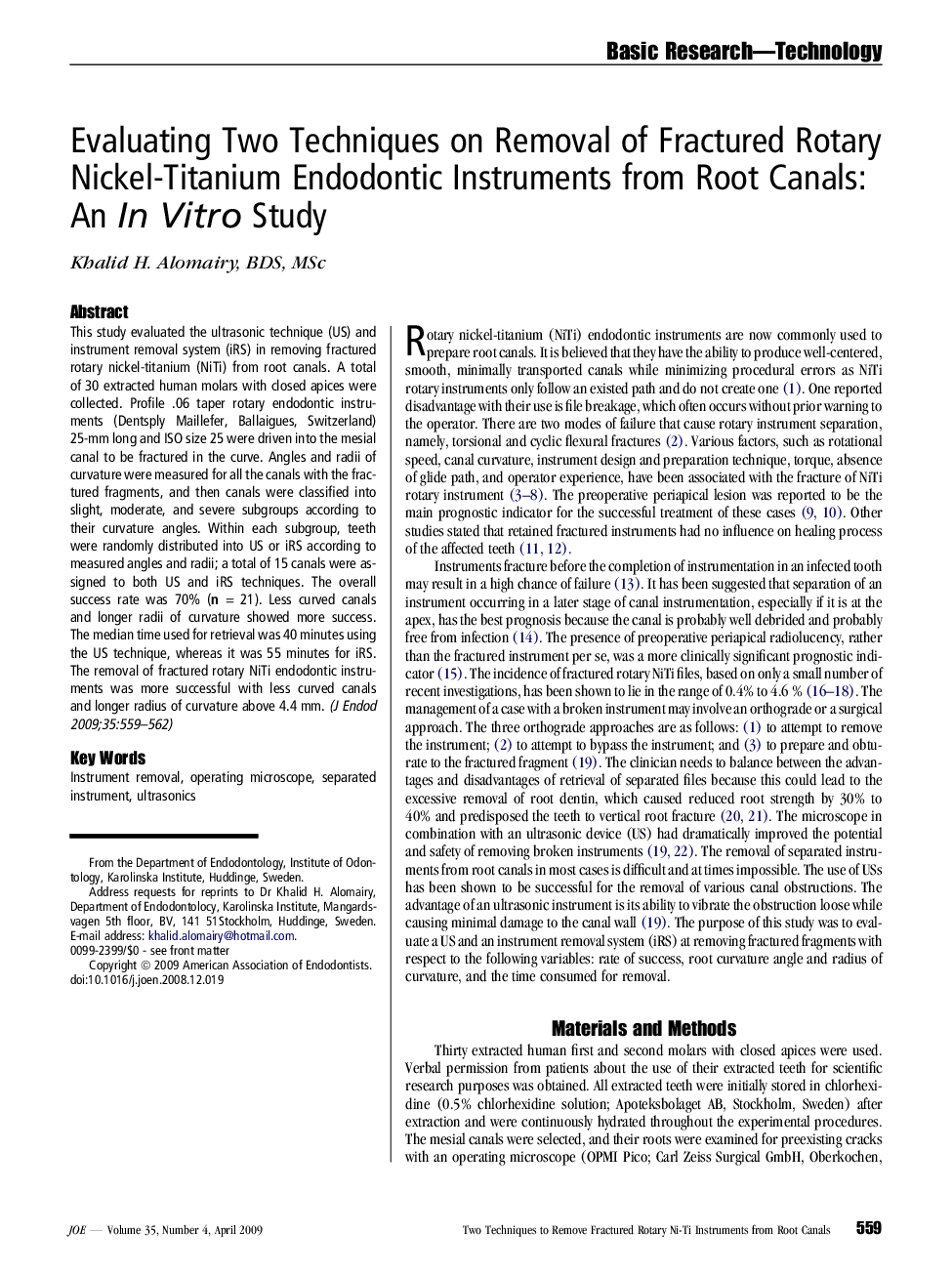| Article ID | Journal | Published Year | Pages | File Type |
|---|---|---|---|---|
| 3148606 | Journal of Endodontics | 2009 | 4 Pages |
This study evaluated the ultrasonic technique (US) and instrument removal system (iRS) in removing fractured rotary nickel-titanium (NiTi) from root canals. A total of 30 extracted human molars with closed apices were collected. Profile .06 taper rotary endodontic instruments (Dentsply Maillefer, Ballaigues, Switzerland) 25-mm long and ISO size 25 were driven into the mesial canal to be fractured in the curve. Angles and radii of curvature were measured for all the canals with the fractured fragments, and then canals were classified into slight, moderate, and severe subgroups according to their curvature angles. Within each subgroup, teeth were randomly distributed into US or iRS according to measured angles and radii; a total of 15 canals were assigned to both US and iRS techniques. The overall success rate was 70% (n = 21). Less curved canals and longer radii of curvature showed more success. The median time used for retrieval was 40 minutes using the US technique, whereas it was 55 minutes for iRS. The removal of fractured rotary NiTi endodontic instruments was more successful with less curved canals and longer radius of curvature above 4.4 mm.
